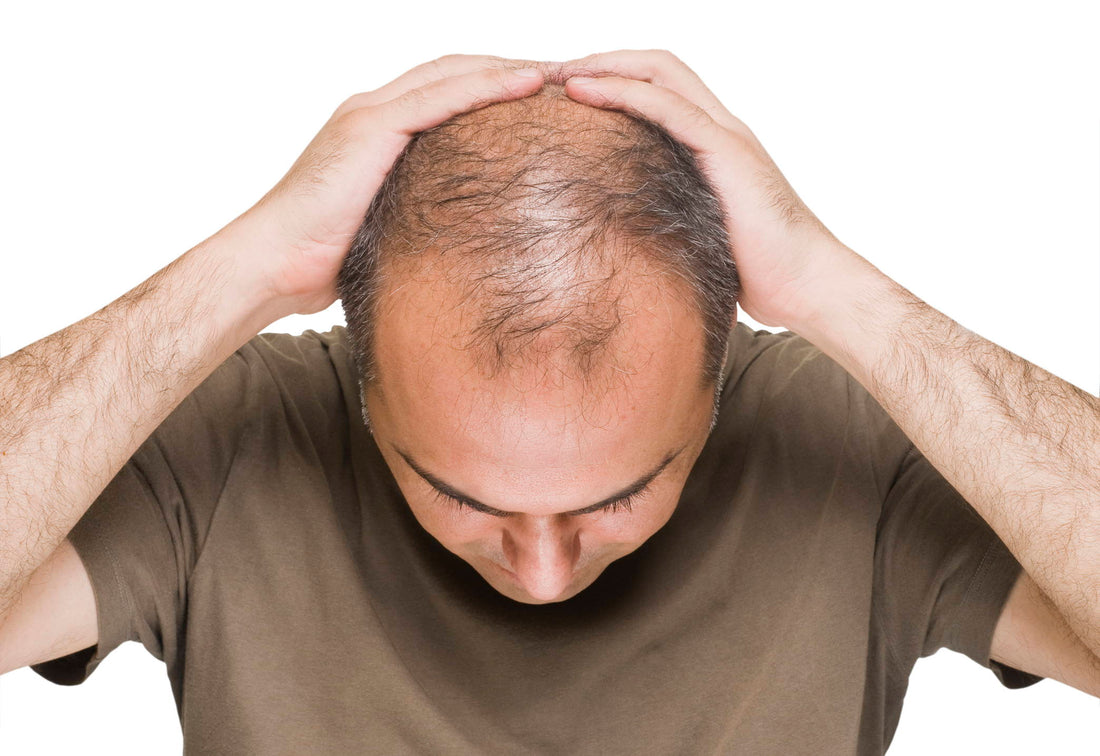In this article:
- What do topical steroids do?
- Why do some topical steroids cause hair loss?
- How to recover from hair loss due to topical steroids
- Products to try
What Do Topical Steroids Do?
Steroids are naturally occurring hormones in the body that scientists have recreated in the lab to help treat diseases. Steroids produced in our bodies are typically released when we are under stress to help control the immune system. Specifically, steroids help curb inflammation by making anti-inflammatory proteins and preventing the production of new inflammatory cells. Inflammation plays an important role in responding to initial injuries and disease, but it can be problematic when it is sustained.
The skin is the most accessible organ to treat in the body. Thus, topical steroids can be ideal for treating skin conditions because you can target the problem specifically rather than taking a systemic medication.
Topical steroids come in the form of creams, ointments, and lotions that contain steroid medication. They work by reducing inflammation in your skin. These medications are often used to treat skin conditions like:
- Eczema
- Seborrheic dermatitis
- Diaper rashes
- Fungal infections
- Contact dermatitis
- Psoriasis
- Urticaria (hives)
Why Do Some Topical Steroids Cause Hair Loss?
In certain situations, topical steroids may cause hair loss, especially with prolonged use. Topical steroids can lead to skin thinning over time, and may even change the layers of the middle layer of the skin (the dermis). These changes can impact your hair follicles and prevent them from making new follicles with too much use.
Yet, topical steroids are often the treatment of choice for many scalp conditions that are difficult to treat. For example, alopecia areata is an autoimmune condition where the immune system attacks your hair follicles and prevents them from making new hair. Topical corticosteroids are one of the treatment options for this condition, although it is not always as effective in adults. Instead, corticosteroids are injected into bald areas, which may be a more effective way of combating this type of hair loss.
When it comes to steroid use, hair thinning is most commonly associated with systemic steroids, which is a medication that you swallow. Some systemic steroids may increase DHT levels in your body. DHT is a derivative of testosterone found in both men and women. Obviously, it is more potent in men. However, both genders can develop a sensitivity to DHT that can cause your hair follicles to shrink.
How To Recover From Hair Loss Due To Topical Steroids
If you have had hair loss after using topical steroids, the best thing you can do is complete your course of treatment and then start to regrow your hair using the right combination of lifestyle changes and products.
Lifestyle changes
Remember, inflammation is at the root of most conditions that require steroid treatment, which can take a toll on your body. Make sure you are giving your body:
- Plenty of rest
- Good foods that are rich in proteins, fats, and vitamins, and,
- Lots of water
Also, you will want to try to avoid anything that triggered your skin condition in the first place. For example, if you have contact dermatitis from using an irritating shampoo product, make sure to avoid it.
Products
You will need to use hair regrowth products in addition to lifestyle adjustments. Most cases of hair loss benefit from the use of a product like minoxidil, which is an over-the-counter hair growth formula. Also, using a good shampoo to support hair regrowth while combatting scalp inflammation is key. Below is a list of products you may want to try if you are trying to recover from hair loss due to topical steroids.

